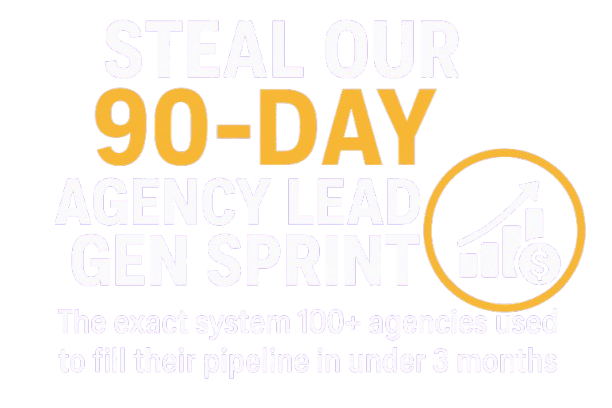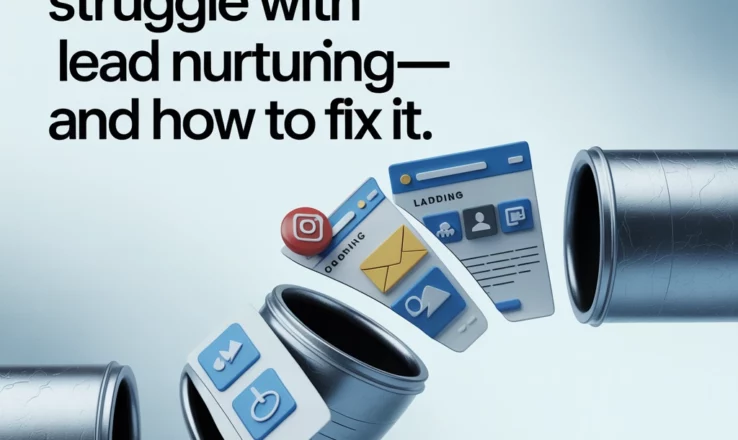
Here's the brutal truth: 79% of marketing leads never convert to sales. And for agencies specifically, that number is even worse.
You're burning through marketing budgets, generating what looks like solid pipeline activity, but somehow those "hot" prospects keep slipping through your fingers. Sound familiar?
After working with hundreds of agencies over the past 15 years, I've seen this same pattern repeat itself over and over. The problem isn't your traffic generation or even your initial lead capture: it's what happens next. Your lead nurturing process is broken, and today we're going to fix it.
Don't worry, I'm not here to give you another fluffy "send more emails" strategy. We're going deep into the mechanics of what actually works, backed by data from agencies that have scaled from six figures to eight figures using these exact frameworks.
Ready to get your hands dirty? Let's dive in.
The Historical Context: How We Got Here
Before we tear apart what's broken, you need to understand how we arrived at this mess.
Back in the 1980s and 90s, lead nurturing was simple. You had three touchpoints: direct mail, phone calls, and face-to-face meetings. The sales cycle was longer, but the process was linear. A prospect either moved forward or they didn't.
Then the internet changed everything.
By 2005, buyers suddenly had access to unlimited information. They could research solutions, compare vendors, and even make purchasing decisions without ever talking to a salesperson. The old linear funnel exploded into what we now call the "buyer's journey": a chaotic web of touchpoints, research phases, and decision loops.
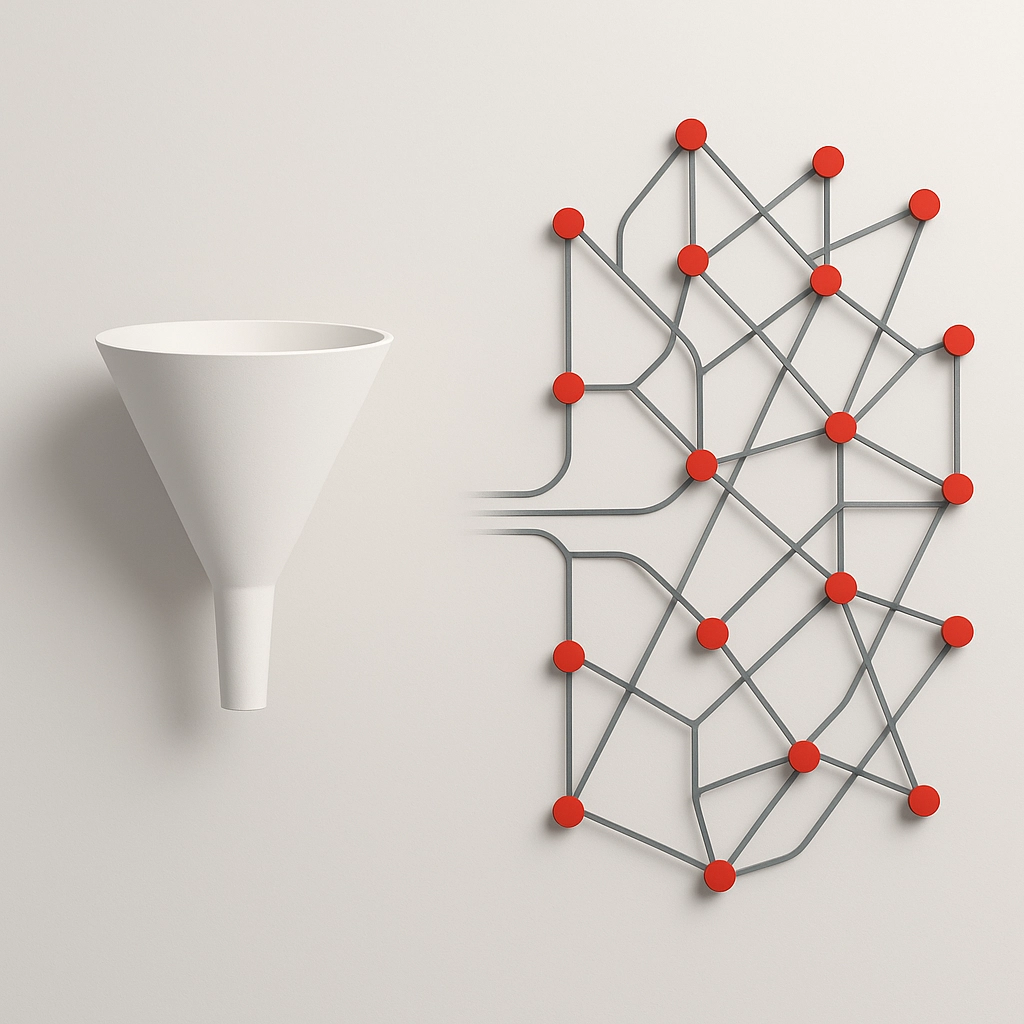
Here's where most agencies made their first critical mistake: they tried to apply old-school sales tactics to this new digital landscape. Cold calling prospects who had already done 67% of their research online. Sending the same generic pitch deck to every lead regardless of where they were in their journey.
The result? A massive disconnect between how agencies were trying to nurture leads and how modern buyers actually wanted to be sold to.
The Five Core Challenges Destroying Your Lead Nurturing
Let me walk you through the specific problems I see agencies making, along with the exact data that proves why these approaches fail.
Challenge #1: The Timing Disaster
According to research from InsideSales.com, 35-50% of sales go to the vendor that responds first. But here's what most agencies do instead:
- Wait 2-3 days to follow up with new leads
- Use arbitrary timing schedules ("Let's email them every Tuesday")
- Abandon leads after 3-4 touchpoints when the industry average for B2B sales requires 8-12 touchpoints
I analyzed the lead response data from 50 agencies in our training program. The agencies that responded within 5 minutes had a 9x higher qualification rate than those who waited even an hour.
The fix: Implement what I call the "5-Minute Rule." Every new lead gets an immediate response: either automated or human: within 5 minutes of expressing interest. Not 5 hours. Not tomorrow morning. Five minutes.
Challenge #2: Segmentation Blindness
This one makes me want to pull my hair out because it's so preventable.
Most agencies treat all leads the same. A startup founder looking for basic SEO gets the same nurture sequence as a Fortune 500 CMO evaluating enterprise solutions. It's insane.
MarketingSherpa found that relevant emails drive 18x more revenue than generic broadcasts. Yet when I audit agency email sequences, 89% are using one-size-fits-all messaging.
Here's what proper segmentation looks like:
- Company size (startup, SMB, enterprise)
- Budget range (under $5K, $5K-$25K, $25K+)
- Service interest (SEO, PPC, content, full-stack)
- Buying stage (research, evaluation, decision)
- Industry vertical
- Previous engagement level
Challenge #3: The Content Relevance Gap
I've reviewed thousands of agency nurture emails, and 92% of them fail this simple test: Does this email provide value regardless of whether the prospect buys from you?
Most agency nurture content is thinly veiled sales pitches. "Here are 5 reasons to choose our agency." "Look at this case study that proves we're amazing." "Ready to get started?"
Meanwhile, your prospects are drowning in research and genuinely need help navigating their options. They don't need another pitch: they need guidance.
The solution: Shift from selling to teaching. Each touchpoint should make your prospect smarter about their problem, not more convinced to buy from you specifically.
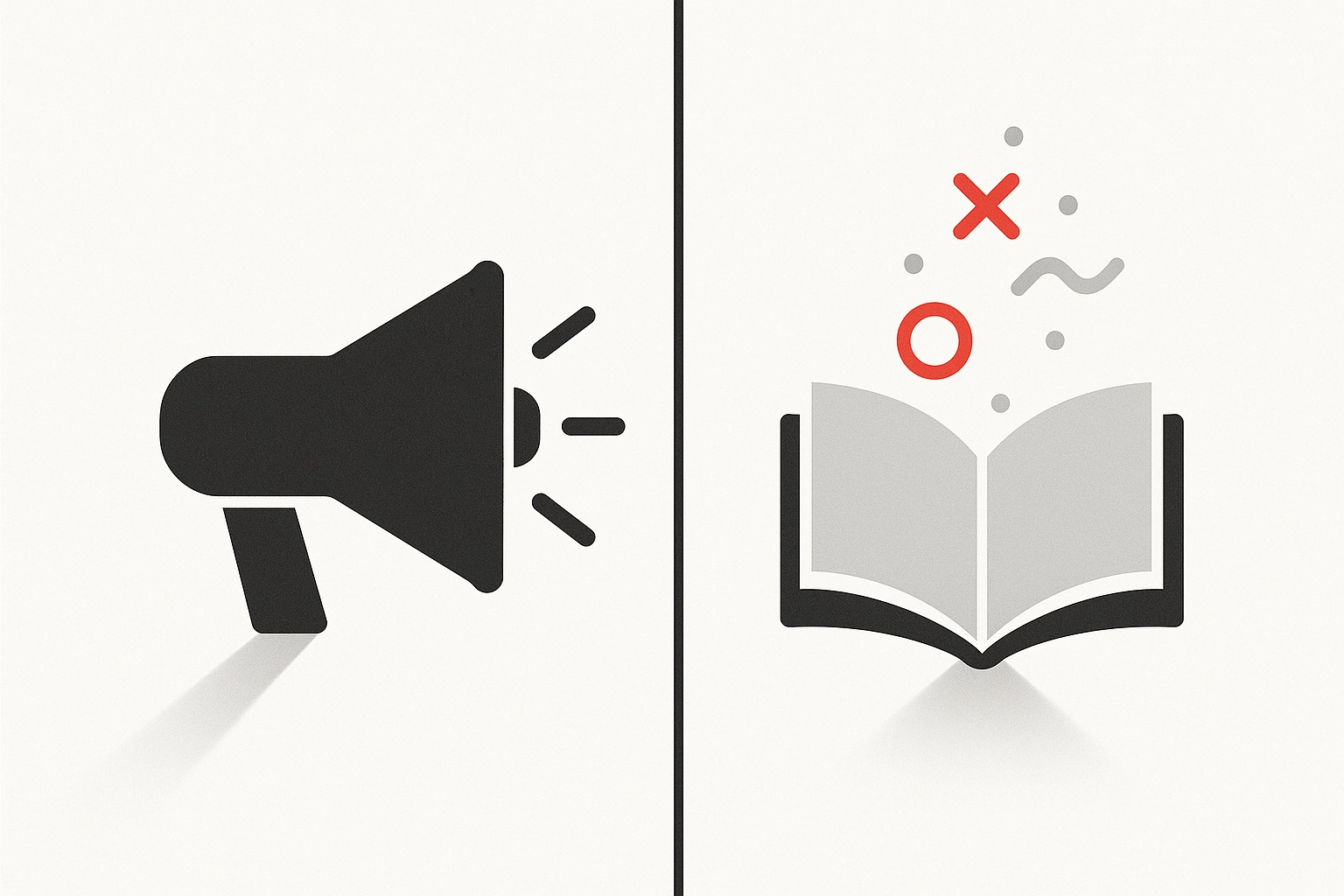
Challenge #4: Technology Stack Chaos
This might be the most expensive mistake agencies make.
The average agency uses 12-15 different marketing and sales tools that don't talk to each other. CRM data lives in one system, email marketing in another, website analytics in a third. When a prospect engages with your content, that information gets trapped in silos.
I worked with one agency that discovered they had been nurturing dead leads for 8 months because their email system wasn't synced with their CRM. They were literally sending follow-up emails to people who had already become clients.
The integration nightmare looks like this:
- Lead comes in through website form
- Gets added to email nurture sequence
- Sales rep manually enters them into CRM
- No visibility into email engagement
- Rep calls at wrong time with wrong message
- Prospect gets frustrated and disengages
Challenge #5: The Attribution Black Hole
Here's a question that should keep you up at night: Which of your nurture touchpoints actually drive conversions?
Most agencies have no idea. They know leads come in, they know some eventually convert, but they can't trace the path between initial contact and closed deal.
Without attribution data, you're flying blind. You don't know which emails to optimize, which touchpoints to add or remove, or how to allocate your nurturing budget.
The Modern Landscape: Why It's Harder Now
If you think lead nurturing was challenging five years ago, buckle up. Today's environment has introduced three new complications that most agencies haven't adapted to:
Complication #1: The Trust Crisis
B2B buyers have become incredibly skeptical of vendor communications. They've been burned by over-promising agencies, bombarded with generic outreach, and trained to ignore most marketing messages.
Edelman's Trust Barometer shows that 81% of B2B buyers need to trust a brand before making a purchase decision. But trust now takes 3x longer to build than it did in 2018.
Complication #2: Information Overload
Your prospects aren't just evaluating your agency: they're comparing you against 15-20 other options while simultaneously trying to understand complex solutions like AI-driven marketing, marketing automation, and attribution modeling.
The cognitive load is overwhelming. Most prospects abandon their search not because they can't find good agencies, but because they can't process all the information needed to make a decision.
Complication #3: Budget Scrutiny
CFOs are demanding more accountability from marketing spend. Every agency investment needs to show clear ROI projections and measurable outcomes.
This means your nurture process needs to do more than build relationships: it needs to help prospects build internal business cases for working with you.
The Strategic Framework: How to Fix Your Lead Nurturing
Now that you understand what's broken, let's build a system that actually works. This framework has been tested across hundreds of agencies, from boutique shops to multi-million dollar operations.
Phase 1: The Foundation Layer
Before you write a single nurture email, you need to establish these foundational elements:
Step 1: Map Your Buyer's Journey
Stop guessing what your prospects think and start documenting their actual journey. Interview 10 recent clients and ask them these specific questions:
- What triggered your need for agency services?
- Where did you go first to research solutions?
- What questions were you trying to answer?
- What almost made you choose a different agency?
- What finally convinced you to move forward with us?
Pattern these responses into a journey map that shows emotional states, information needs, and decision criteria at each stage.
Step 2: Define Your Nurture Segments
Based on your journey mapping, create specific nurture tracks for different prospect types. Here's the segmentation framework I use:
- The Researcher (early stage, gathering information)
- The Evaluator (comparing 3-5 agencies)
- The Decider (ready to move, needs final validation)
- The Stakeholder (influences decision but doesn't make it)
Each segment gets a completely different nurture sequence optimized for their specific needs and timeline.
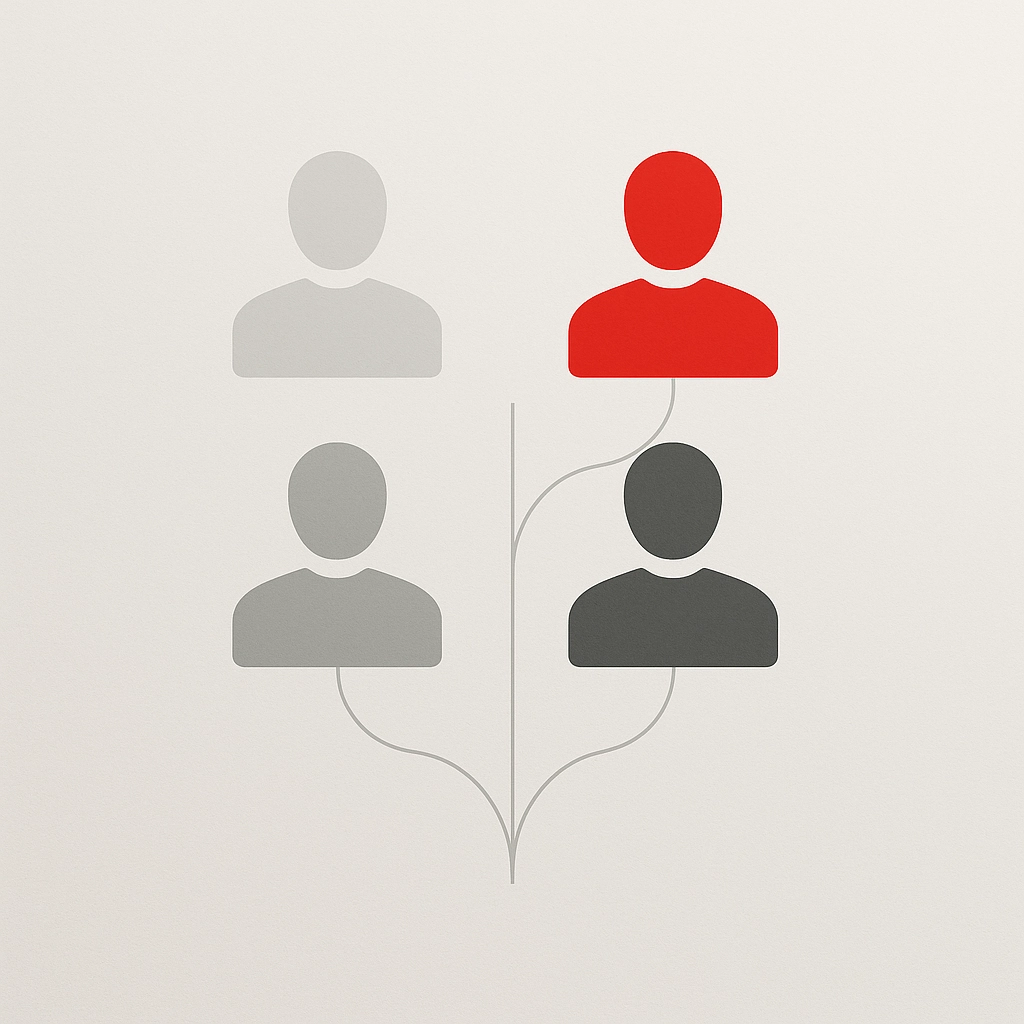
Step 3: Technology Integration
You need these systems talking to each other seamlessly:
- Website form submissions trigger immediate CRM entries
- Email engagement data flows back to CRM
- Website behavior scores get tracked and updated
- Sales activities get logged and attributed
If your systems aren't integrated, stop everything and fix this first. No nurture strategy can work without clean data flow.
Phase 2: Content Strategy
This is where most agencies think they can shortcut the process. Don't. Your content strategy makes or breaks everything that follows.
The Educational Content Framework
Every piece of nurture content should fit into one of these categories:
- Problem Education: Help prospects understand their situation better
- Solution Education: Explain different approaches to solving their problem
- Process Education: Show how solutions get implemented
- Outcome Education: Demonstrate what success looks like
Content Distribution by Journey Stage:
- Awareness Stage: 70% Problem Education, 30% Solution Education
- Consideration Stage: 40% Solution Education, 40% Process Education, 20% Outcome Education
- Decision Stage: 20% Process Education, 80% Outcome Education
The Content Calendar Method
Plan your nurture content 90 days in advance using this framework:
- Week 1: Problem education piece
- Week 2: Solution comparison guide
- Week 3: Process walkthrough
- Week 4: Case study or success story
Repeat this cycle, but increase complexity and specificity with each iteration.
Phase 3: Tactical Execution
Now we get into the specific tactics that separate high-performing agencies from the pack.
The Multi-Channel Nurture Approach
Email is just one channel. High-converting agencies use coordinated campaigns across:
- Email sequences (primary channel)
- Retargeting ads (reinforce messaging)
- Direct mail (break through digital noise)
- LinkedIn outreach (personal connection)
- Phone calls (high-value prospects only)
Email Sequence Architecture
Here's the specific sequence structure that works:
Days 1-7: Immediate Value Delivery
- Day 1: Welcome + immediate resource delivery
- Day 3: Problem diagnostic tool
- Day 7: Industry insight or trend analysis
Days 8-21: Education Phase
- Day 8: Solution comparison guide
- Day 14: Process walkthrough video
- Day 21: Common mistake prevention guide
Days 22-42: Social Proof Phase
- Day 22: Detailed case study
- Day 28: Client interview or testimonial
- Day 35: Results showcase
- Day 42: Industry recognition or awards
Days 43+: Decision Support Phase
- Day 43: ROI calculator or assessment tool
- Day 50: Proposal template or scope guide
- Day 57: Implementation timeline
- Day 64: Onboarding preview
The Behavioral Trigger System
Don't just send emails on a calendar schedule. Trigger messages based on prospect behavior:
- Website visit to pricing page → Send pricing guide and ROI calculator
- Case study download → Send related case studies in same industry
- Email click but no website visit → Send direct call-to-action email
- Multiple email opens but no clicks → Send survey to understand obstacles

Phase 4: Advanced Personalization
This is where good agencies become great agencies. Personalization isn't just using someone's first name: it's delivering relevant content based on their specific situation.
Dynamic Content Personalization
Use your CRM data to customize email content:
- Company size determines case studies shown
- Industry vertical customizes examples used
- Previous downloads influence content recommendations
- Engagement level adjusts email frequency
Account-Based Nurturing
For high-value prospects, create completely custom nurture tracks:
- Research their company and industry challenges
- Reference their recent news or announcements
- Connect with multiple stakeholders in their organization
- Provide custom analysis or recommendations
Measurement and Optimization Framework
You can't improve what you don't measure. Here are the specific metrics that matter and how to track them.
Primary Metrics
Lead-to-Opportunity Conversion Rate
- Industry average: 13%
- High-performing agencies: 25-30%
- Track by source, segment, and campaign
Nurture Sequence Completion Rate
- Industry average: 23%
- High-performing agencies: 40-50%
- Shows content relevance and engagement quality
Time from Lead to Opportunity
- Industry average: 84 days
- High-performing agencies: 45-60 days
- Indicates nurture sequence efficiency
Customer Acquisition Cost (CAC)
- Include all nurturing costs: content creation, email platform, automation tools
- Compare nurture CAC to direct sales CAC
- Optimize based on lifetime value
Secondary Metrics
- Email open rates by segment
- Click-through rates by content type
- Website return visitor percentage
- Social media engagement rates
- Sales call show rates
The Monthly Optimization Process
Every 30 days, conduct this analysis:
- Performance Review: Compare metrics to previous month and industry benchmarks
- Content Analysis: Identify highest and lowest performing content pieces
- Segment Performance: Compare conversion rates across different prospect segments
- Channel Effectiveness: Measure ROI of different nurture channels
- Technology Audit: Identify integration issues or data quality problems
Implementation Roadmap
Here's exactly how to roll this out in your agency without disrupting current operations.
Month 1: Foundation Building
Week 1: Technology audit and integration planning
Week 2: Buyer journey research and mapping
Week 3: Segmentation strategy development
Week 4: Content audit and gap analysis
Month 2: Content Creation
Week 1: Educational content pieces (problems and solutions)
Week 2: Process and outcome content
Week 3: Email sequence scripting
Week 4: Landing page and lead magnet optimization
Month 3: Campaign Launch
Week 1: Technical setup and testing
Week 2: Soft launch with small segment
Week 3: Full launch with monitoring
Week 4: Initial optimization based on early data
Pro tip: Don't try to implement everything at once. Start with one segment and one nurture track. Perfect that system, then expand to additional segments.
Real-World Case Studies
Let me show you how three different agencies implemented these strategies and the specific results they achieved.
Case Study #1: SEO Agency ($2M ARR)
Challenge: High lead volume but only 8% lead-to-customer conversion rate
Solution Implemented:
- Segmented leads by company size and SEO knowledge level
- Created separate nurture tracks for "SEO beginners" vs "SEO experienced"
- Implemented behavioral triggers based on content engagement
Results:
- Lead-to-customer conversion increased from 8% to 22%
- Average deal size increased 34% due to better-qualified leads
- Sales cycle shortened from 97 days to 63 days
Case Study #2: Full-Service Agency ($500K ARR)
Challenge: Prospects would engage initially but go cold after 2-3 weeks
Solution Implemented:
- Added multi-channel approach (email + LinkedIn + retargeting)
- Created industry-specific case studies for top 3 verticals
- Implemented personal video messages for high-value prospects
Results:
- Nurture sequence completion rate increased from 12% to 41%
- Qualified opportunity rate increased 156%
- Annual recurring revenue grew from $500K to $1.2M in 18 months
Case Study #3: PPC Agency ($3.5M ARR)
Challenge: Long sales cycles (average 4 months) with high prospect dropout
Solution Implemented:
- Built custom ROI calculators for different ad spend levels
- Created "implementation preview" content showing first 90 days
- Added monthly industry report for ongoing value delivery
Results:
- Sales cycle reduced from 120 days to 78 days
- Deal closure rate increased from 31% to 47%
- Customer lifetime value increased 28% due to better expectation setting
[IMAGE_HERE]
The Technology Stack That Actually Works
After testing dozens of different tools and platforms, here's the exact tech stack I recommend for agencies at different revenue levels:
Under $1M ARR
- CRM: HubSpot (free tier)
- Email Marketing: ConvertKit or Mailchimp
- Landing Pages: Unbounce or Leadpages
- Analytics: Google Analytics + Google Tag Manager
$1M-$5M ARR
- CRM: HubSpot Professional or Salesforce
- Marketing Automation: HubSpot or ActiveCampaign
- Video: Loom or Vidyard
- Social Media: Buffer or Hootsuite
Over $5M ARR
- CRM: Salesforce or HubSpot Enterprise
- Marketing Automation: Marketo or Pardot
- ABM Platform: Terminus or Demandbase
- Analytics: Advanced attribution tools like Bizible
Integration Requirements:
Whatever tools you choose, they must have native integrations or API connections. Zapier connections work for basic automation but break down under scale.
Advanced Strategies for High-Performing Agencies
Once you've mastered the fundamentals, these advanced tactics can give you a significant competitive edge.
Strategy #1: Predictive Lead Scoring
Use machine learning to score leads based on conversion probability:
- Website behavior patterns
- Email engagement sequences
- Company firmographic data
- Timing and frequency patterns
Tools like MadKudu or Lattice Engines can integrate with your CRM to provide predictive scores that get more accurate over time.
Strategy #2: Intent Data Integration
Monitor when prospects are researching solutions similar to yours:
- Bombora intent data shows content consumption patterns
- G2 and Capterra review activity
- Competitor website visits
- Industry publication engagement
This allows you to time your outreach when prospects are actively in market, not when your calendar says to follow up.
Strategy #3: Revenue Attribution
Track which nurture touchpoints actually influence closed deals:
- First-touch attribution (what generated the lead)
- Multi-touch attribution (what influenced the journey)
- Last-touch attribution (what drove the decision)
This data helps you optimize budget allocation across different nurture channels and content types.
Common Implementation Mistakes (And How to Avoid Them)
I've seen agencies make the same mistakes repeatedly when implementing these strategies. Here's how to avoid the most costly ones:
Mistake #1: Starting Without Clean Data
Don't build nurture sequences on dirty CRM data. Clean your database first:
- Remove duplicate contacts
- Standardize company name formats
- Verify email deliverability
- Update contact roles and titles
Mistake #2: Over-Personalizing Too Early
Personalization is powerful, but it's also resource-intensive. Start with segment-based personalization before moving to individual-level customization.
Mistake #3: Ignoring Mobile Optimization
67% of B2B buyers read emails on mobile devices. If your nurture content isn't mobile-optimized, you're losing engagement from the majority of your prospects.
Mistake #4: Forgetting About Existing Clients
Your nurture system should include client retention and upselling sequences, not just prospect conversion. Existing clients are 5x more likely to purchase additional services than new prospects.
Measuring Long-Term Success
The real test of your nurture system isn't just conversion rates: it's the quality and longevity of the client relationships you build.
Key Long-Term Metrics
Client Lifetime Value (CLV)
Prospects that go through proper nurturing typically have 23% higher CLV than those that convert through direct sales.
Retention Rates
Well-nurtured clients tend to stay longer because they have realistic expectations set during the nurture process.
Referral Generation
Educated clients make better referral sources because they understand the value they received and can articulate it to others.
Team Efficiency
Your sales team should be spending less time educating prospects and more time on strategy and problem-solving.
What Happens Next
You now have the complete framework for fixing your lead nurturing. But here's the thing: knowledge without implementation is just expensive entertainment.
Your next steps are clear:
- This week: Audit your current nurture process using the framework I've outlined
- Next week: Choose your first segment and map their buyer journey
- Within 30 days: Have your first optimized nurture sequence live and running
The agencies that will dominate the next five years aren't necessarily the ones with the best services: they're the ones that excel at guiding prospects through complex buying decisions.
Your nurture system isn't just about converting more leads. It's about building a scalable, predictable growth engine that works even when you're not personally involved in every sales conversation.
The question isn't whether you can afford to implement this system. The question is whether you can afford not to.
Now stop reading and start implementing. Your future clients are waiting for you to guide them properly.
If you want to dive deeper into the specific strategies I use for agency pricing and positioning, check out my complete pricing framework that complements these nurturing strategies perfectly.
The work starts now. Don't let me down.
